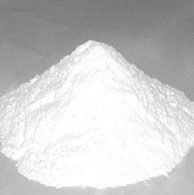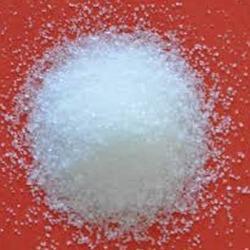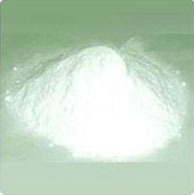Sodium Fluoride
Product Details:
- CAS No 7681-49-4
- Appearance White to greenish solid
- Physical Form Powder
- Molecular Formula NaF
- Purity IP /technical
- Density 2.558 g/cm3
- Taste Odorless
- Click to View more
Sodium Fluoride Price And Quantity
- 1 Ton
- 25000 INR
Sodium Fluoride Product Specifications
- 7681-49-4
- White to greenish solid
- Powder
- NaF
- IP /technical
- 2.558 g/cm3
- Odorless
- 41.98817 Grams (g)
Sodium Fluoride Trade Information
- Cash Advance (CA), Cash in Advance (CID), Cheque
- 100 Ton Kg Per Day
- 1 Week
- Yes
- Free samples are available
- Bag
- Western Europe, Australia, North America, Eastern Europe, Central America, Africa, Middle East, South America, Asia
- All India
Product Description
Sodium Fluoride salt is most commonly utilized for maintaining dental health by adding in municipal drinking water. It is known to play an important role in treatment of postmenopausal osteoporosis and for various medical imaging techniques. This compound has molecular formula NaF with molar mass of 41.98 g/mol and boiling point of 1704 degrees Celsius. It appears as white to greenish solid with odorless nature and solubility in ammonia & HF. Sodium Fluoride is an inorganic compound that is prepared by neutralizing hexafluorosilicic acid or hydrofluoric acid. It has density of 2.558 g/cm3 and melting point of 993 degrees Celsius.
Sodium Fluoride BP Grade Ph Eur
- DEFINITION Content: 98.5 per cent to 100.5 per cent (dried substance).
- CHARACTERS Appearance: White or almost white powder or colourless crystals.
- Solubility: Soluble in water, practically insoluble in ethanol (96 per cent).
IDENTIFICATION
- To 2 ml of solution S (see Tests) add 0.5 ml of calcium chloride solution R. A gelatinous white precipitate is formed that dissolves on adding 5 ml of ferric chloride solution R1.
- To about 4 mg add a mixture of 0.1 ml of alizarin S solution R and 0.1 ml of zirconyl nitrate solution R and mix. The colour changes from red to yellow.
- Solution S gives reaction (a) of sodium.
TESTS Solution S: Dissolve 2.5 g in carbon dioxide-free water R without heating and dilute to 100 ml with the same solvent.
Appearance of solution: Solution S is clear (2.2.1) and colourless.
Acidity or alkalinity: Dissolve 2.5 g of potassium nitrate R in 40 ml of solution S and dilute to 50 ml with carbon dioxide-free water R. Cool to 0 °C and add 0.2 ml of phenolphthalein solution R. If the solution is colourless, not more than 1.0 ml of 0.1 M sodium hydroxide is required to produce a red colour that persists for at least 15 s. If the solution is red, not more than 0.25 ml of 0.1 M hydrochloric acid is required to change the colour of the indicator.
Chlorides: Maximum 200 ppm.
Fluorosilicates: Heat to boiling the neutralised solution obtained in the test for acidity or alkalinity and titrate whilst hot. Not more than 0.75 ml of 0.1 M sodium hydroxide is required to change the colour of the indicator to red.
Sulphates: Maximum 200 ppm.
Loss on drying: Maximum 0.5 per cent, determined on 1.000 g by drying in an oven at 130°C for 3 h.
ASSAY Dissolve 0.100 g in water R and dilute to 60 ml with the same solvent. Titrate with 0.1 M lanthanum nitrate, determining the end-point potentiometrically (2.2.20) using a fluoride selective indicator electrode and a silver-silver chloride reference electrode.1 ml of 0.1 M lanthanum nitrate is equivalent to 12.60 mg of NaF.
Sodium Fluoride USP GradeNaF 41.99 -- [7681-49-4].Sodium Fluoride contains not less than 98.0 percent and not more than 102.0 percent of NaF, calculated on the dried basis.
Identification:
- Place 1 g in a platinum crucible in a well-ventilated hood, add 15 mL of sulfuric acid, and cover the crucible with a piece of clear, polished glass. Heat the crucible on a steam bath for 1 hour, remove the glass cover, rinse it in water, and wipe dry: the surface of the glass is etched.
- A solution (1 in 25) responds to the tests for Sodium.
Tests: Acidity or alkalinity: Dissolve 2.0 g in 40 mL of water in a platinum dish, add 10 mL of a saturated solution of potassium nitrate, cool the solution to 0 , and add 3 drops of phenolphthalein. If no color appears, a pink color persisting for 15 seconds is produced by not more than 2.0 mL of 0.10 N sodium hydroxide. If the solution is colored pink by the addition of phenolphthalein, it is rendered colorless by not more than 0.50 mL of 0.10 N sulfuric acid. Save the neutralized solution for the test for Fluosilicate.
- Loss on drying: Dry it at 150 for 4 hours: it loses not more than 1.0% of its weight.
- Fluosilicate: After the solution from the test for Acidity or alkalinity has been neutralized, heat to boiling, and titrate while hot with 0.10 N sodium hydroxide until a permanent pink color is obtained: not more than 1.5 mL of 0.10 N sodium hydroxide is required.
- Chloride: Dissolve 300 mg in 20 mL of water, and add 200 mg of boric acid, 1 mL of nitric acid, and 1 mL of 0.1 N silver nitrate: any turbidity produced is not greater than that of a blank to which has been added 1.0 mL of 0.0010 N hydrochloric acid (0.012%).
- Heavy metals: To 1 g, in a platinum dish or crucible, under a hood, add 1 mL of water and 3 mL of sulfuric acid, and heat at as low a temperature as practicable until all of the sulfuric acid has been expelled. Dissolve the residue in 20 mL of water, neutralize the solution to phenolphthalein with ammonium hydroxide, add 1 mL of glacial acetic acid, dilute with water to 45 mL, filter, and use 30 mL of the filtrate for the test: the limit is 0.003%.

Price:
- 50
- 100
- 200
- 250
- 500
- 1000+
Other Products in 'Fluoride Powder' category
 |
PARTH INDUSTRIES
All Rights Reserved.(Terms of Use) Developed and Managed by Infocom Network Private Limited. |







